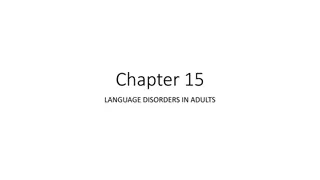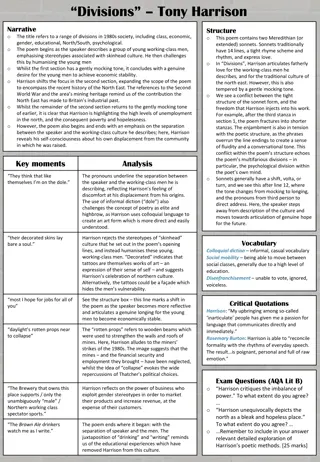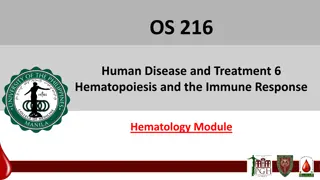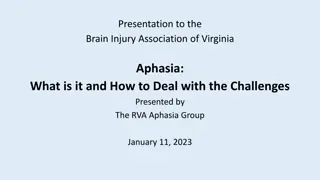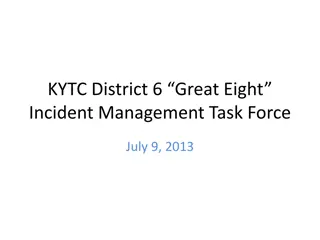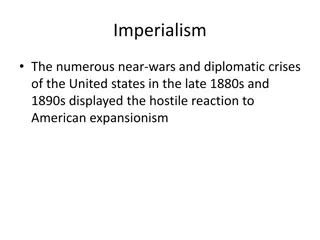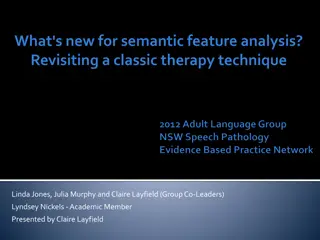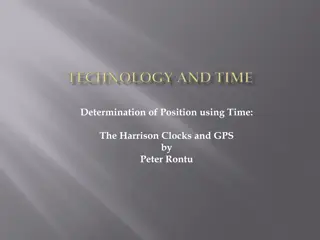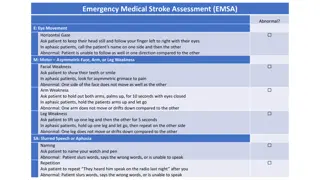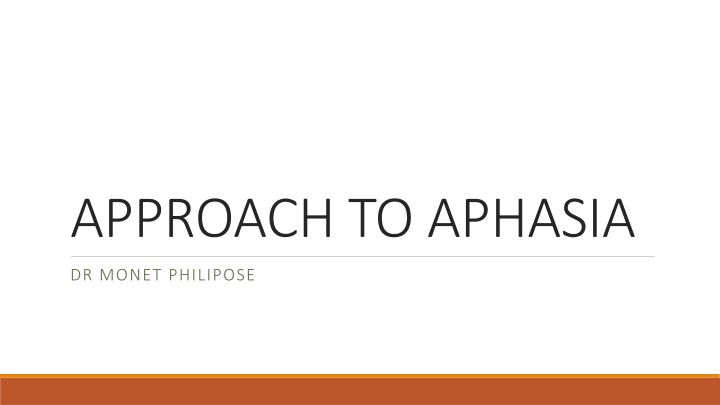
Aphasia and its Neural Correlates
Explore the intricate neural networks involved in language processing, uncovering the underlying mechanisms of aphasia – a condition that disrupts language production and comprehension due to brain lesions. Learn about key areas such as Broca's and Wernicke's, and the role of tracts like the arcuate fasciculus in speech function.
Download Presentation

Please find below an Image/Link to download the presentation.
The content on the website is provided AS IS for your information and personal use only. It may not be sold, licensed, or shared on other websites without obtaining consent from the author. If you encounter any issues during the download, it is possible that the publisher has removed the file from their server.
You are allowed to download the files provided on this website for personal or commercial use, subject to the condition that they are used lawfully. All files are the property of their respective owners.
The content on the website is provided AS IS for your information and personal use only. It may not be sold, licensed, or shared on other websites without obtaining consent from the author.
E N D
Presentation Transcript
APPROACH TO APHASIA DR MONET PHILIPOSE
Aphasia is the loss or impairment of the production and / or comprehension of spoken or written language due to a lesion in brain.
The production and comprehension of words and sentences is dependent on the integrity of a distributed network located along the perisylvian perisylvianregion of the language dominant, usually the left region of the language dominant, usually the left cerebral hemisphere. cerebral hemisphere.
The central sulcus intersects the sylvian fissure near its posterior ramus. The PIF language areas lie in front of the central sulcus in the frontal lobe The PST areas lies posterior to central sulcus
BROADMANN AREAS FOR SPEECH Broca s area - situated in the inferior frontal gyrus , - needed for the fluency of verbal outputs and grammatical structure of sentences. Wernicke s area - located at the superior temporal gyrus - needed for the word and sentence comprehension. left precentral gyrus of insula motor planning of speech
Arcuate fasciculus - deep white matter tracts that arches from Wernicke s area around the posterior end of the sylvian fissure to broca s area. Angular gyrus - part of inferior parietal lobule - connects wernickes area and the visual cortex - for reading and other non verbal language functions
Supramarginal gyrus - lies between visual cortex and the PST, - involved in visual language functions Exner s center - lies in the middle frontal gyrus - cortical area concerned with writing functions.
CLINICAL EXAMINATION The clinical examination of language is done by the assessment of naming comprehension repetition reading Writing fluency of speech.
NAMING Ask the patient to identify and name colors like red green blue Check the ability to name body parts The ability to name common objects in ward
COMPREHENSION Comprehension can be examined by assessing the patient s ability to follow conversation ,giving sequence of commands one step command like close your eyes multistep command like close your eyes and point to the window , asking yes-no questions like is it a hospital or hotel asking the patient to point approppriate objects or by asking for verbal definitions of single words.
REPETITION Repetition is assessed by asking the patient to repeat single words , short sentences or strings of words , with phrases in increasing complexity. The testing of repetition with tongue twisters provides a better assessment of dysarthria and palilalia than of aphasia.
READING Reading can be assessed for deficits in reading aloud as well as comprehension. Patients are asked to read aloud from newspaper or from a list of words Reading comprehension may be tested with written commands eg. Fold this paper into half and put it on the table Confirm whether the patient is literate and check whether she/he 1) can read words /sentences/paragraphs 2)can comprehend what she/he is reading
WRITING Assessed by 1) writing the letters and numbers to dictation 2) writing short sentences describing about his/her disease 3) copying a sentence
FLUENCY Spontaneous speech is described as fluent if it maintains The output volume Phrase length Melody of speech
Nonfluent Nonfluent speech has the following characteristics speech has the following characteristics Sparse output with a decreased number of words per minute, usually utterance length below four words Shortened phrases Agrammatism characterized by omission or substitution of function words -telegraphic speech Effortfulness with hesitations and disruption of normal melodic rhythm Breakdown of speech praxis - the ability to coordinate the articulatory movements required for comprehensible speech tested by asking the patient to repeatedly pronounce the syllables ma/pa/ta and then to link the three together into a sequence
APHASIA SYNDROMES APHASIA SYNDROMES
ANOMIA ANOMIA Anomia is the deficit in naming When asked to name a common object ,the patient may fail to come up with the appropriate word In one- way/retrieval based naming deficit - the patient cannot retrieve the appropriate object when shown an object but can point to the appropriate object when the name is provided by the examiner. In two- way deficit /comprehension based /semantic naming deficit -the patient cannot provide or recognize the correct name.
BROCAS APHASIA BROCA S APHASIA Speech is nonfluent with sparse word output Abnormal word order leads to agrammatism Comprehension preserved Naming impaired Repetition impaired Associated right facial weakness , hemiparesis/hemiplegia may be present Cause is infarction of Broca s area due to occlusion of the superior division of MCA
WERNICKES APHASIA WERNICKE S APHASIA Fluent aphasia Comprehension impaired Speech is voluminous, but meaningless, contains paraphasic errors and neologisms often described as word salad Naming impaired Repetition impaired Patient lost insight about his illness and can became agitated Most commonly related to the lesion in inferior division of MCA. Coexistent right hemianopia/superior quadrantopia may be present.
CONDUCTION APHASIA CONDUCTION APHASIA Fluent aphasia Comprehension preserved Naming impaired Repetition impaired Lesion is in the arcuate fasciculus interconnecting the Brocas and Wernickes area
GLOBAL APHASIA GLOBAL APHASIA Deficits in all language functions Comprehension ,Fluency ,Naming , Repetition will be lost Associated with extensive peri sylvian injury affecting both Broca s and Wernicke s areas due to strokes affecting entire MCA distribution. Patients are often mute or produce only nonword utterances Patients generally have a right hemiparesis/hemisensory loss and right visual field deficit.
TRANSCORTICAL MOTOR APHASIA TRANSCORTICAL MOTOR APHASIA Aphasia similar to Broca s except that here the repetition is intact. Nonfluent speech Naming impaired Comprehension preserved Repetition preserved The lesion site disconnects intact language network from prefrontal areas of brain and usually involves the anterior watershed zone between ACA and MCA
TRANSCORTICAL SENSORY APHASIA TRANSCORTICAL SENSORY APHASIA Aphasia similar to Wernicke s except that, here the repetition is intact Fluent aphasia Comprehension impaired with paraphasic errors Naming impaired Repetition is preserved Patients can read aloud but without comprehension Lesions can be in the posterior watershed zone or temporoparietal cortex posterior to the Wernicke s area
TRANSCORTICAL MIXED APHASIA TRANSCORTICAL MIXED APHASIA Combination of two transcortical aphasias Nonfluent aphasia Comprehension lost Naming lost Repetition preserved Seen in lesions to the frontal,parietal,temporal cortex ,associated with anoxia,carbon monoxide poisoning,complete watershed zone infarctions.
ANOMIC APHASIA ANOMIC APHASIA Patients with anomic aphasia cannot name or write the word for a particular item/object Sentence comprehension ,fluency , repetition is intact Seen in head trauma ,metabolic encephalopathy , Alzheimer s disease.
APHASIA RELATED DISORDERS APHASIA RELATED DISORDERS
PURE WORD DEAFNESS PURE WORD DEAFNESS There is interruption of flow of information from auditory association area to language network Patients can comprehend written language, but not spoken language. Spontaneous speech is preserved Patient cannot repeat spoken language The most common cause are either bilateral or left sided MCA strokes affecting the superior temporal gyrus
PURE WORD MUTISM PURE WORD MUTISM Deficits in the production of oral speech with retention of auditory comprehension as well as the ability to write and read
ALEXIA WITHOUT AGRAPHIA ALEXIA WITHOUT AGRAPHIA Visual equivalent of pure word deafness Interruption in the flow of visual input to language network Patient can understand and produce spoken language,name objects,repeat and write, but cannot read Lesion in left occipital cortex,angular gyrus, and splenium of corpus callosum
SUBCORTICAL APHASIA SUBCORTICAL APHASIA Damage to subcortical components of language network like thalamus,striatum,periventricular white matter or internal capsule of the language dominant hemisphere - also can lead to aphasia.
PRIMARY PROGRESSIVE APHASIA (PPA) can be caused by FTLD,Alzheimers disease and rarely in Creutzfeldt Jacob disease (CJD) Aphasia caused by neurodegenerative diseases have an insidious onset and relentless progression.
AGRAMMATIC PPA The language impairments in agrammatic PPA includes Low fluency Impaired grammar with intact word comprehension Resembles Broca s aphasia but usually lacks hemiparesis. The neuropathology is FTLD with taupathy with neuronal loss in the inferior frontal gyrus.
SEMANTIC PPA The semantic variant is characterized by Preserved fluency and syntax Impaired single word comprehension Anomia Comprehension of sentences is relatively preserved. Differs from Wernicke s aphasia because speech is usually informative and the repetition is intact. The neuropathology is FTLD with neuronal losses in anterior temporal lobe
LOGOPENIC PPA The logopenic variant is characterized by Preserved syntax and word comprehension Anomia ,word finding pauses ,circumlocutions , impaired repetition Interruption of fluency is variable Resembles anomic aphasia ,but with frequent word finding pauses. Most commonly associated with AD.

